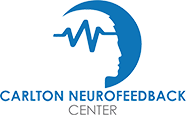When a child is struggling at school with focus, attention, and impulsive behavior, the diagnosis that often comes to mind is Attention-Deficit/Hyperactivity Disorder. Researchers estimate that 6 million children in the U.S. have been diagnosed with Attention-Deficit/Hyperactivity Disorder (ADHD). Stimulant medication, often prescribed to help improve focus, is the most common treatment that medical professionals recommend. However, the approach does not work for every child and can have unwanted side effects. A brain-based training program called neurofeedback training, however, does offer promising results to children and adults with this condition.
How does a typical brain with ADHD work?
When compared to someone without ADHD, ADHD brains show imbalances in the type and quantity of brainwaves they have. In the front of the brain, in the area responsible for concentration and organization, they have too many slower Delta and Theta brainwaves. These slower brainwaves are usually higher when someone is resting or daydreaming. The excess of them, when a person is awake, interferes with the function of the faster Beta brainwaves needed for clear cognitive thought.
How does medicine affect the ADHD brain?
Stimulant medications such as Ritalin or Adderall speed up the brain, improving focus and attention. But they also affect the entire body – producing some unwanted side effects. They can cause sleep problems, lower appetite (a problem for a developing child!), irritability, depression, and more. While medicine can help in the short term, it rarely solves the problem in the long term. Children and adults can develop a tolerance to the drugs, requiring more medication to get the same effect. And the drugs can stop working altogether.
How is neurofeedback training different?
Neurofeedback is a non-invasive, all-natural approach that helps children and adults re-train their brains to bring them into balance. It uses the brain`s neural plasticity to help it develop new, more efficient pathways. The new pathways represent a physical change in brainwave patterns, which can allow the brain to function better in the long term. The training process is painless and enjoyable. In fact, all the patient has to do is relax and watch a movie!
While they watch, sensors on the scalp measure their brainwave activity in real-time. When the Delta waves get too high, the video dims, and the sound goes down. These audio and visual cues are feedback based on the neural output. The result – the brain speeds up, and the Delta waves diminish, allowing the person to focus better on the show since the decrease in Delta allows more Beta waves to be produced.
Over time, the brain learns to stay more balanced on its own. This learning process is known as “operant conditioning.” Remember learning how to ride a bike? Like this process, you started without the needed neural pathways to let you ride the bike efficiently (If at all). However, you kept at it over time until you got it down pat. Years later, those pathways still exist, which is why we say, “Just like riding a bike, you never forget!”.
We Can Help
If the treatment plan to manage ADHD symptoms is not working, the Carlton NeuroFeedback Center in Manassas, Virginia, can offer a safe, long-lasting alternative. Find out more about neurofeedback and ADHD/ADD, and download our free eBook. Call us today for a free, no-obligation consultation to learn more about neurofeedback training for children and adults with ADHD and other brain-based conditions.
Sources:
https://www.cdc.gov/ncbddd/adhd/data.html
https://psychcentral.com/blog/neurofeedback-therapy-an-effective-non-drug-treatment-for-adhd/
https://www.additudemag.com/neurofeedback-adhd-brain-training/
https://www.researchgate.net/publication/8163418_Emerging_brain-based_interventions_for_children_and_adolescents_Overview_and_clinical_perspective


